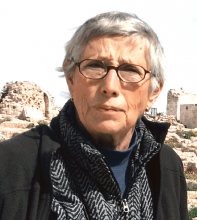You are here
What to expect after de-escalation zones
May 10,2017 - Last updated at May 10,2017
Russia clearly rushed the launch of its plan to impose de-escalation zones in Syria in order to catch potential opponents off guard and present them with a fait accompli.
The plan, tabled a week ago during talks in Astana, Kazakhstan, carves out four areas where hostilities between Syrian government forces and insurgents are meant to stop and front lines are to be frozen.
In a highly informative May 5 article, Al Monitor’s correspondent in Moscow, Maxim Suchkoy reveals that Russia prepared carefully for the launch by consulting Iran and Turkey, the plan’s co-sponsors, the US, Saudi Arabia and the UN.
The Syrian government agreed, but argued that it would continue its fight against “terrorists”, but insurgent representatives attending the Astana gathering rejected the plan.
Turkish President Recep Tayyip Erdogan and his US counterpart were brought on board, while, according to Suchkoy, key opposition field commanders favoured the deal and the memorandum was accepted by 27 “warlords” operating within the de-escalation zones.
Since last Friday, fighting between government forces and insurgents within these zones has decreased and air strikes have been reduced.
Suchkoy quotes Sergei Rudskoy, chief of Russian Main Operational Directorate of the General Staff, as saying that the largest zone includes northwestern Idlib province, northeastern Latakia, western Aleppo and northern Hama, where more than a million people dwell.
The second zone covers northern Homs, with 180,000 people; the third zone, the area east of Damascus (East Ghouta), with 690,000 people; and the fourth zone is along the border with Jordan, where 800,000 people live.
While the total number of civilians living in these areas is around 2.7 million, the overall number of insurgents — taqfiris and others — ranges from 3,000 to 15,000, depending on the zone.
Russia is apparently ready to add three other zones.
The next steps are to delineate the zones, set up check points and buffer zones, map areas held by “moderate” insurgents and outlawed taqfiris and work out the deployment of troops and monitors to ensure the integrity of these zones.
Once the zones are fully established, Russia warns that violators will be punished.
Suchkoy says the goals of the Russian defence ministry are to split armed groups dubbed to be “moderate” from Daesh and Al Qaeda’s Jabhat Fatah Al Sham, deliver humanitarian aid to residents in the de-escalation zones, and restore infrastructure and water to these zones to encourage refugees to return.
The most challenging task will be to separate “moderates” from Jabhat Fatah Al Sham.
Having agreed 18 months ago to put pressure on armed groups it supports to break links with the Jabhat, the US has not done so although this is mandated in the December 2015 UN Security Council Resolution 2254, the basis for international efforts to bring the war in Syria to an end.
Washington has failed because armed factions and “warlords” it supports are allied to the Jabhat.
It has better motivated fighters and better arms than less well-endowed groups that need Jabhat muscle to mount operations.
Moscow now seems to be prepared to use the leverage it has gained on the battlefields in Syria and on the international scene by proposing the de-escalation plan to put pressure on the Trump administration to cut its ties with insurgent groups that refuse to renounce connections to the Jabhat.
Since the Jabhat and Daesh are branded “terrorist” organisations by the UN, the US and the international community, these groups, along with Jabhat, could once again come under fire from Moscow, Damascus and Iran within the de-escalation zones.
This could force non-Jabhat factions to break with the group and could lead to inter-factional fighting.
Armed groups cooperating with Daesh in the south and elsewhere will also have to cut ties.
If de-escalation takes hold, the undermanned, overstretched Syrian army could be freed to focus on liberating Deir Ezzor and eastern Syria from Daesh and mop up insurgents in areas outside the de-escalation zones.
If the de-escalation zones are well established, freezing the front lines in four areas will contain the insurgency and pen in insurgents so there can be no more surprises like the August-September Jabhat-led offensive against government-held west Aleppo or the more recent penetration raid into Damascus from East Ghouta.
This will stabilise the situation in government-controlled areas, which contain 80 per cent of the population still residing in Syria.
There will be no more mortars into central Damascus from the suburbs and no more air strikes against Jaish Al Islam’s hometown of Douma or East Ghouta.
Freezing the front lines will make it easier for government and opposition negotiators to talk about a political settlement in Geneva where talks are set to resume on May 15.
Chances of progress could depend on Wednesday’s meeting between Russian Foreign Minister Sergei Lavrov and US President Donald Trump in Washington.
UN mediator Staffan de Mistura, who, according to Suchkoy, played a moderating role between Damascus and the armed groups at Astana, is eager to get the talks going again.
So far, progress has been made in two rounds this year and he would like to build on these gains.
US-Russian cooperation is essential if offensives against Daesh are to bear fruit.
There has to be coordination between US-linked forces dealing with Daesh in Mosul and Raqqa, and Russian- and Iranian-supported units of the Syrian army engaging Daesh in Deir Ezzor.
Daesh commanders and their families have reportedly fled both Mosul and Raqqa for the relative safety of Deir Ezzor. This means the province, which is on the Iraq-Syrian border, must be tackled at the same time as western Mosul and Raqqa.
Once Daesh is defeated and driven from its territorial bases, Russia and the US will have to reach a new accord on how to deal with Jabhat, which is certain to replace Daesh as the taqfiri menace in the region and abroad.
While Daesh can be isolated, thanks to its 2013 rupture with Al Qaeda, Jabhat is doubly dangerous due to its continuing connection with Al Qaeda central based along the Pakistan-Afghanistan frontier.
Al Qaeda will certainly attempt to reassert its ideological and operational reach lost to Daesh in recent years by re-establishing Osama Ben Laden’s “base” as the premier taqfiri organisation on the planet.












